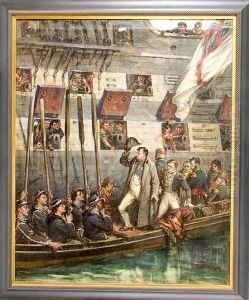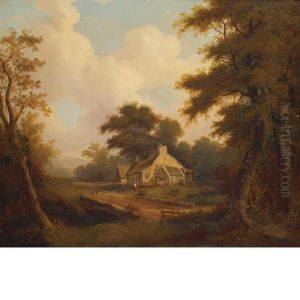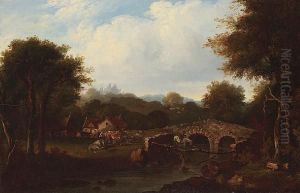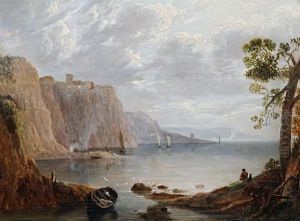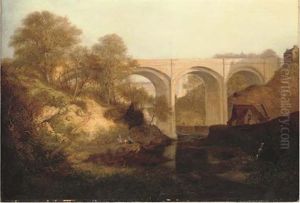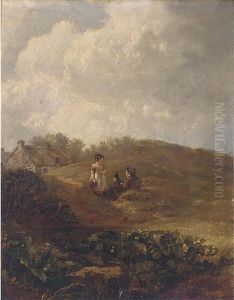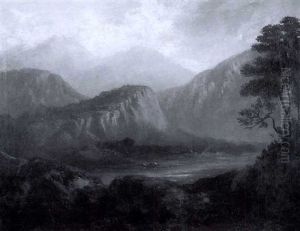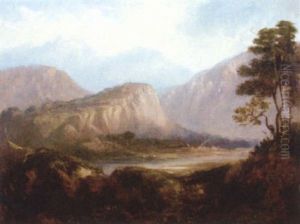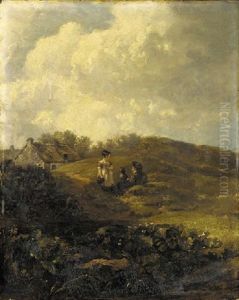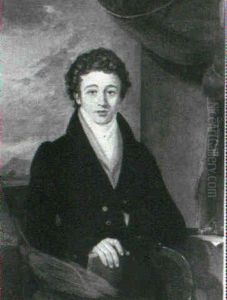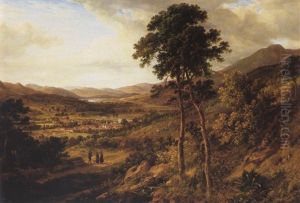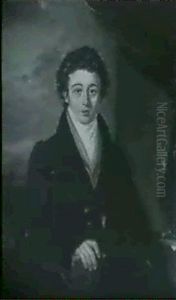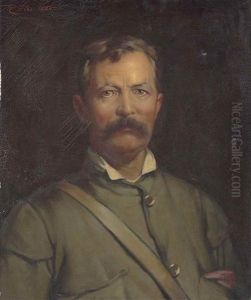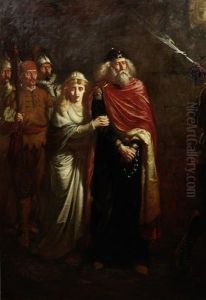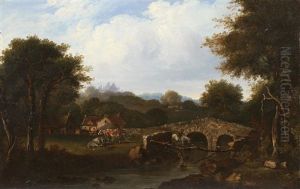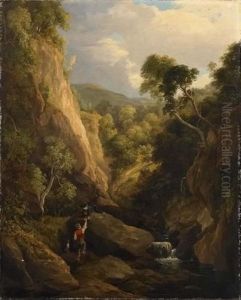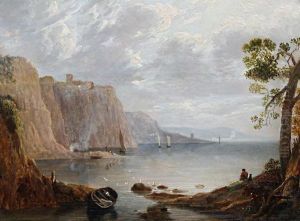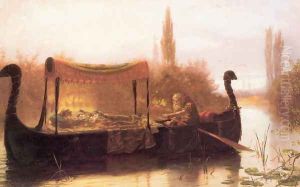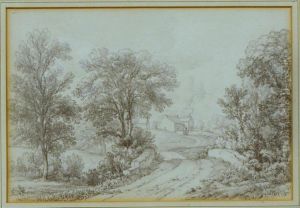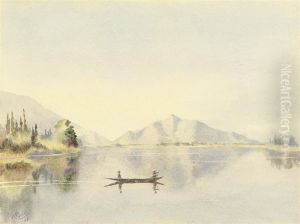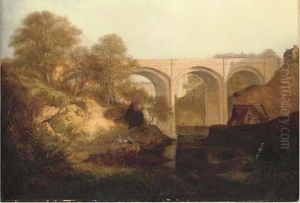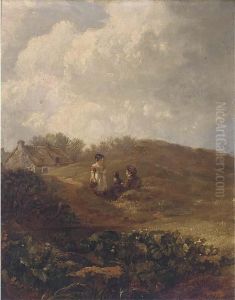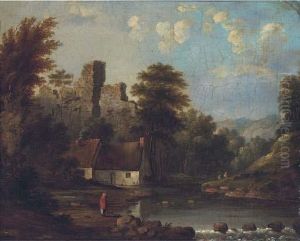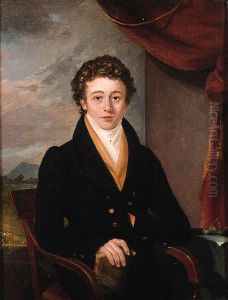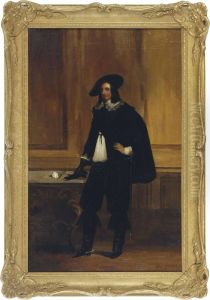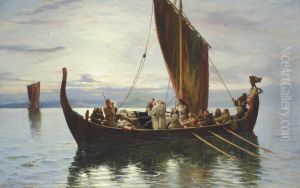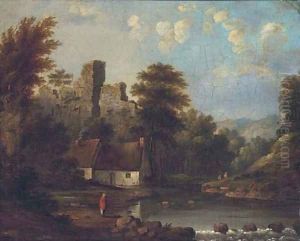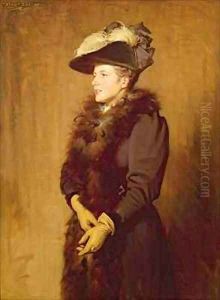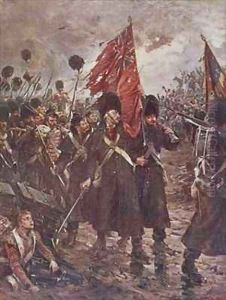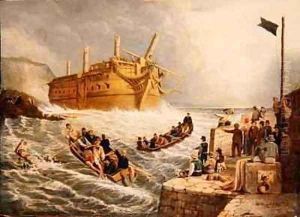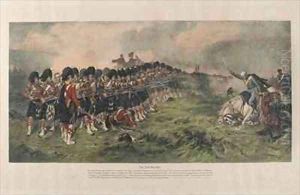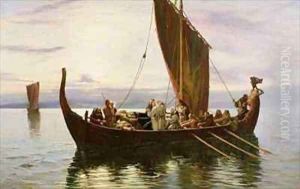Robert Gibb Paintings
Robert Gibb was a prominent Scottish historical painter, best known for his depiction of military subjects. Born on October 28, 1845, in Laurieston, Falkirk, Scotland, he was the son of a master house painter. From a young age, Gibb exhibited a keen interest in art and was encouraged to pursue his passion.
He began his formal art education at the Trustees’ Academy in Edinburgh, which was one of the leading art schools in Scotland at the time. There, he studied under prominent Scottish artists such as Robert Scott Lauder and William McTaggart. Gibb's early work was influenced by the historical and genre paintings popular in the Victorian era.
In 1873, Gibb gained recognition with his painting 'The Thin Red Line', which depicted the famous stand of the 93rd (Sutherland Highlanders) Regiment at the Battle of Balaclava during the Crimean War. This work was exhibited at the Royal Scottish Academy and was met with critical acclaim. It established Gibb as a significant figure in the genre of military art and as a painter of Scottish historical subjects.
Throughout his career, Gibb continued to produce works that captured moments of heroism and valor in Scottish and British military history. His paintings were characterized by their dramatic compositions, meticulous attention to detail, and historical accuracy. He often conducted extensive research to ensure that his depictions were as faithful to the events as possible.
Gibb was elected to the Royal Scottish Academy in 1880 and served as its President from 1919 to 1923. Throughout his life, he remained dedicated to the arts in Scotland, contributing to the development of Scottish art and fostering the next generation of artists. His legacy is remembered for the way he captured the spirit of his subjects and for his contributions to the cultural heritage of Scotland.
Robert Gibb's life was one of devotion to the portrayal of Scotland's past, and his works continue to be celebrated for their artistic merit and historical significance. He passed away on February 11, 1932, leaving behind a body of work that continues to inspire and educate.
